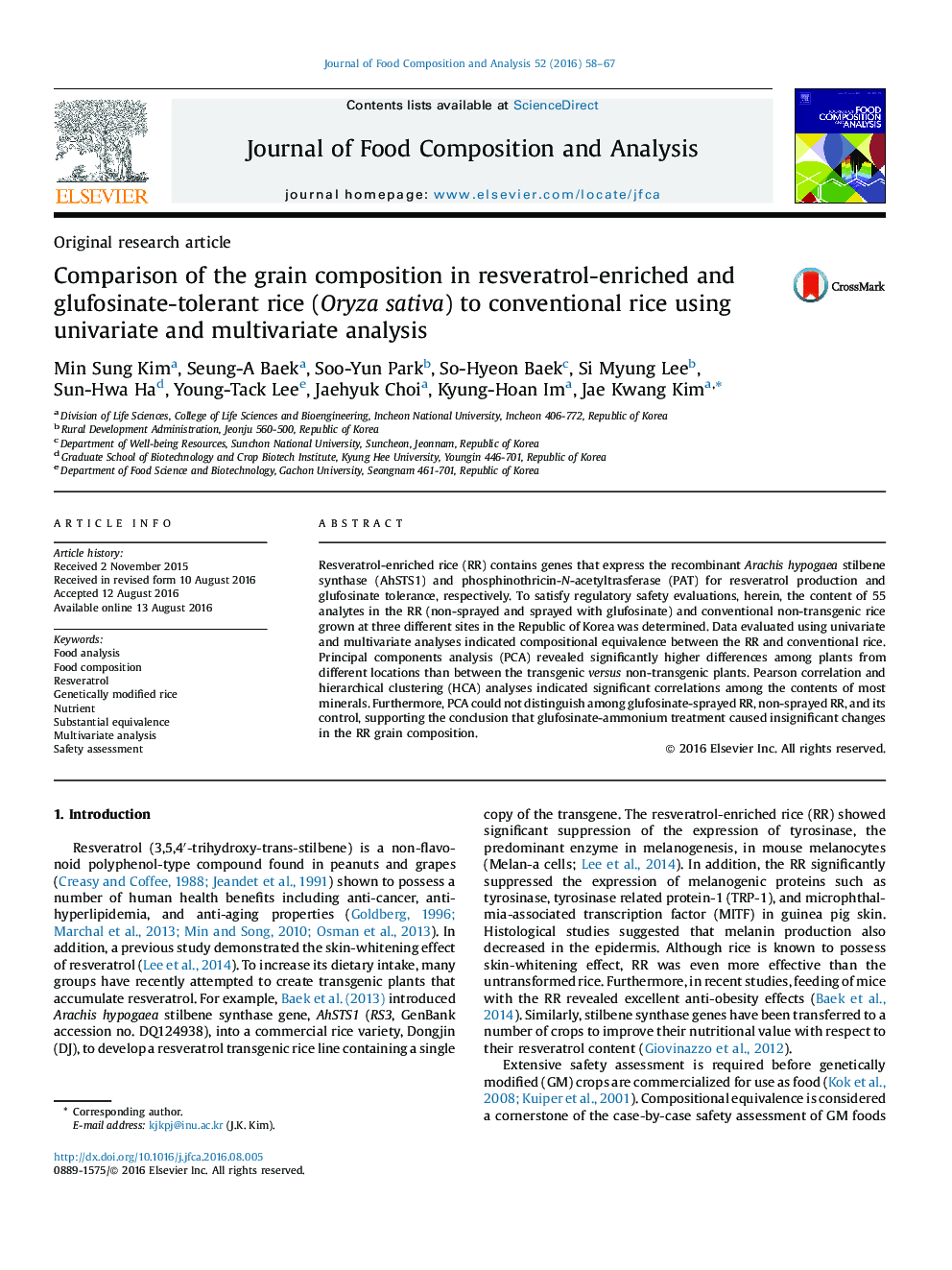| Article ID | Journal | Published Year | Pages | File Type |
|---|---|---|---|---|
| 1218028 | Journal of Food Composition and Analysis | 2016 | 10 Pages |
•We analyzed 55 components in resveratrol-enriched transgenic and non-transgenic rice.•The effects of transgenesis or glufosinate on the content were insignificant.•Growing location was the greatest contributor to compositional variability in grains.
Resveratrol-enriched rice (RR) contains genes that express the recombinant Arachis hypogaea stilbene synthase (AhSTS1) and phosphinothricin-N-acetyltrasferase (PAT) for resveratrol production and glufosinate tolerance, respectively. To satisfy regulatory safety evaluations, herein, the content of 55 analytes in the RR (non-sprayed and sprayed with glufosinate) and conventional non-transgenic rice grown at three different sites in the Republic of Korea was determined. Data evaluated using univariate and multivariate analyses indicated compositional equivalence between the RR and conventional rice. Principal components analysis (PCA) revealed significantly higher differences among plants from different locations than between the transgenic versus non-transgenic plants. Pearson correlation and hierarchical clustering (HCA) analyses indicated significant correlations among the contents of most minerals. Furthermore, PCA could not distinguish among glufosinate-sprayed RR, non-sprayed RR, and its control, supporting the conclusion that glufosinate-ammonium treatment caused insignificant changes in the RR grain composition.
